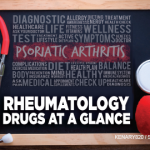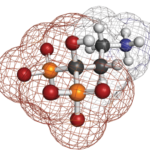Truly informed consent compels a shift from emphasis on dire risks toward responsible optimism.
What matters, ultimately, is not whether the boxed warning is literally correct, but rather whether one implements the safe practices called for in the remainder of the text. These precautions include screening for the presence of chronic infections, such as tuberculosis, coccidioidomycosis, and hepatitis B and C, withholding new starts in people with active infections, suspending the drugs during periods of active infection or for elective surgical procedures, remaining observant for patterns of increased incidence of serious infections in people on the drugs and pursuing appropriate actions in patients who manifest serious infections.
Full prescribing information for drugs is updated periodically based on U.S. Food and Drug Administration (FDA) review of reported adverse events and post-marketing data. No warning, it seems, ever gets walked back based on real-world evidence. The FDA does not ordinarily integrate into such warnings the favorable information that accumulates over the years after drug approval. Within registry, pharmacy, insurance, medical record, hospital billing, actuarial and other sources, comparisons are generally made not between groups of patients with rheumatoid arthritis (RA) on different arms of a randomized, controlled trial, but rather between people with and without RA (i.e., the general population).4 Some studies compare rates of events in RA patients in different chronologic periods (see Review section). In these comparisons, a different view regarding the question of increased serious infections emerges.
Review
Rheumatologists would do well to keep in mind the longer tale of mortality and comorbidities in RA. Long before our trepidation about infections or malignancies with the use of the newly available anti-TNF agents in the late 1990s, we knew serious infections and hematologic malignancies were inherently more common in people with RA than in the general population. These are, indeed, RA complications rather than treatment complications and, along with cardiovascular events related to uncontrolled systemic inflammation, lead to a shortened life expectancy for people with RA when compared with the general population.
Full prescribing information for drugs is updated periodically based on FDA review of reported adverse events & post-marketing data. No warning, it seems, ever gets walked back based on real-world evidence.
Several studies quantified that shorter life expectancy and identified the causes. A prospective study from 1989 by Erhardt et al. comparing an RA cohort with age- and sex-matched controls showed an increased incidence of death from myocardial infarction, pneumonia and complications of RA; the more intense the rheumatic disease manifestations, the higher likelihood of premature death.5
A multicenter registry analysis by Wolfe et al. in 1994 indicated the increase in RA deaths over the standard mortality rate in the background population was 2.26, with mortality strikingly increased for infection, lymphoproliferative malignancy, gastroenterological disorders and RA itself.6 Wolfe further noted the rate of death increased over time, related to the “progressive burden of disability, decrepitude, pain, treatment and treatment side effects operating over time … .” Most treatment side effects were related to prednisone.
Kazis et al. found mortality in RA correlated linearly with impaired mobility and general health perception.7
For the four decades to 1985, Gabriel et al. determined in three population-based cohorts that the excess mortality in RA had not been altered in the concurrent treatment milieu and that “people with RA have not enjoyed the same improvements in survival experienced by their non-RA peers,” with a reduction of about four years of life in women.8
Shifting forward to the period of 1987–2011, which overlaps with the first 13 years of biologic drug availability for RA, Kiadaliri et al. reported a downward trend in RA mortality rates globally.9
Contemporaneously, real-world evidence of a reduction in malignancy rates in RA using biologic agents also suggests preservation of immune competency in the task of tumor cell surveillance.10
Several reports seem to lead in a direction directly counter to the boxed warning for biologics regarding infections and RA. Studying the frequency of infection in people with rheumatoid arthritis compared with non-RA matched controls, Doran et al. calculated hazards ratios for serious infections was 1.83, and for any infection 1.70.11 This suggests patients with RA before the biologic era suffered almost twice the number of infections as the general population.
During the early years of biologic therapy for RA (1999–2006), Smitten et al. reported that infections in hospitalized RA patients occurred at nearly twice the rate as in non-RA patients, but asserted the small portion of the difference attributable to biologics was likely confounded by disease severity or channeling.12
More recently, Lindsey et al. administered the available live-viral herpes zoster vaccine to 160 rheumatic disease patients (mostly RA) on biologic agents (most commonly infliximab) at the end of one dosing interval.13 No patients developed shingles nor disseminated viral infection. Similarly, reactivation of resolved hepatitis B infection during treatment with TNF inhibitors such as infliximab has not been shown in a meta-analysis to be significantly increased over background rate of reactivation.14
In an observation from Germany, Richter et al. showed that RA patients on biologics who incurred serious infections were less likely than those on non-biologic treatments to develop sepsis and less likely to die if they developed sepsis.15



